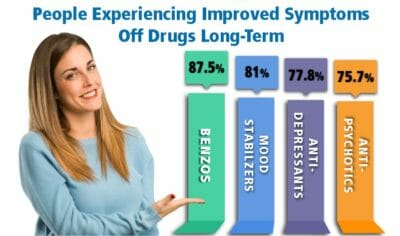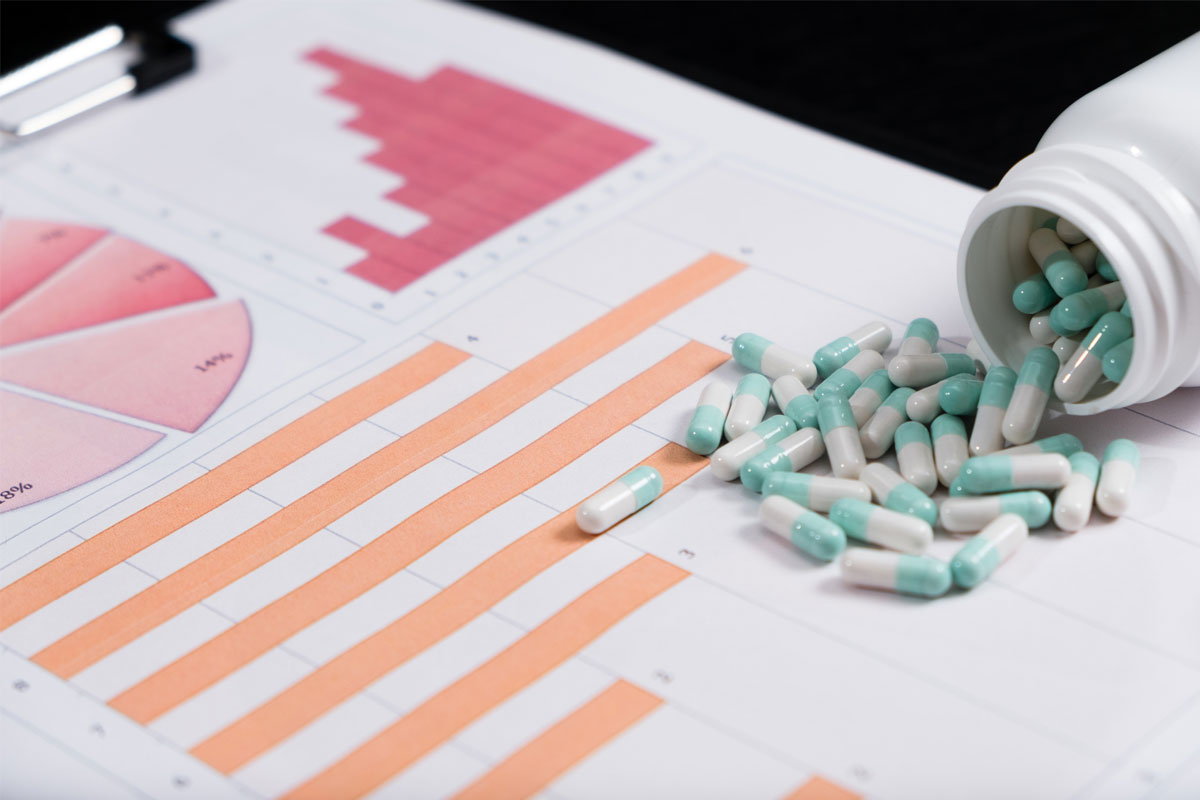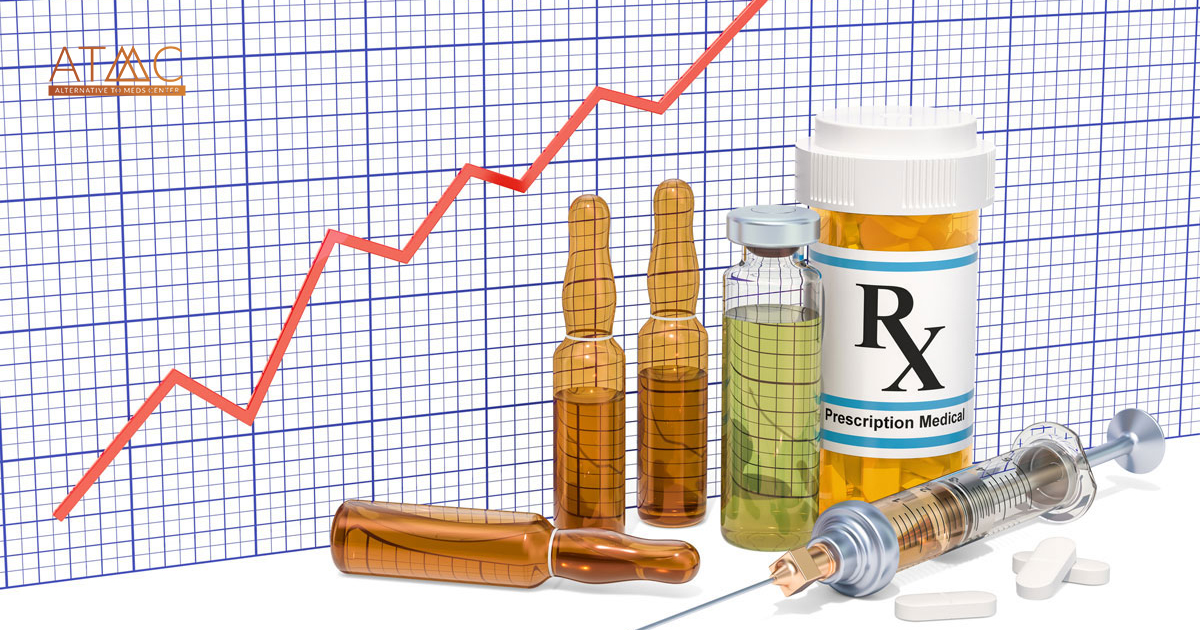Last Updated on May 13, 2024 by
Alternative to Meds Editorial Team
Medically Reviewed by Dr Samuel Lee MD

Last Updated on May 13, 2024 by
Alternative to Meds Editorial Team
Medically Reviewed by Dr Samuel Lee MD

However, instead of receiving comprehensive and holistic guidance on how to manage their disease or disorder, patients are commonly given prescription drugs as an easy fix. The frequency of prescription drug abuse is often associated with the amount of prescriptions prescribed by doctors. Even after prescription rates fall, drug abuse rates will generally continue to climb due to the addictive nature of many prescription drugs.

Unfortunately, drug addiction rates have not deterred medical providers from prescribing addictive medications. Despite their high risk for abuse, amphetamines can be prescribed by doctors for disorders such as attention deficit hyperactivity disorder (ADHD) and obesity. Meanwhile, prescription opioids, commonly prescribed as painkillers, are highly addictive and can lead to secondary addictions to street opioids.
Let’s take a closer look at current statistics and what they reveal about prescriptions.
Statistics reveal that Americans have come to heavily rely on prescription drugs, with 45.8% of the population having taken a prescription drug within the past month. Drugs are often prescribed as “first line” methods of treatment, and often without much investigation into root causes of the condition. The high rates of prescription can lead to increased drug overuse, addiction, and other negative outcomes. Alarmingly, of those who misuse prescription drugs in the United States, only 253,100 or 12.7% admit that they have an addiction, obscuring the scale of the problem. This problem persists due to the normalization of prescription drugs as opposed to alternative holistic treatment, the profitability of the pharmaceutical industry, and other factors.
Other key statistics about prescription drug abuse include:
In the United States, there are estimated to be 16.3 million people who misuse prescription drugs each year, and they make up 5.76% of the population. This means that more than one person per every 20 people in the country abuses prescription drugs at least once a year, with the most commonly abused types of prescription drugs being painkillers and opioids.2
Prescription opioid abuse is particularly alarming, with 9.49 million Americans aged 12 and older misusing these types of drugs at least once over the past year. Of these individuals, roughly 92% of them report using prescription opioids at least one time annually. As the statistics reveal, both youth and adults in the United States struggle with opioids.3
Among illegal substance use, prescription drugs are the third most abused substance, behind marijuana and cocaine. In terms of all substances, prescription drugs are the fifth most abused substance, with alcohol and tobacco being the top two most abused.
Drug overdoses are among the top causes of death in the United States, with the total number of overdose deaths per 100,000 people climbing dramatically from 2002 to 2022. In the past few years, overdoses have risen considerably when it comes to stimulants and opioids, many of which are tied to prescription drugs. In the year 2022 alone, there was a reported number of 107,941 drug overdose deaths, which equates to 32.6 deaths per 100,000 in the population.4
Alarmingly, the age-adjusted rate of deaths due to drug overdose in the United States was four times higher in 2022 than it was in 2002. Over just 20 years, the rate jumped from 8.2 per 100,000 to 32.6 per 100,000. It is important to note, however, that the rate of drug overdose deaths of women decreased from 2021 to 2022 while increasing for men. Also, from 2021 to 2022, the rate of deaths caused by drug overdose increased in the older and middle-aged adult population.5
Drug overdoses due to the abuse of psychostimulants and synthetic opioids have risen dramatically over the past 20 years. Psychostimulants that have been frequently abused, leading to death, include methamphetamine, amphetamine, and methylphenidate, which can all technically be prescribed by a doctor.
Notable statistics related to psychostimulant overdoses include:
Synthetic opioids other than methadone were the leading drug linked to overdose deaths in 2021, with roughly 88% of opioid-linked deaths being attributed to synthetic opioids. Synthetic opioids include drugs such as tramadol, fentanyl, and fentanyl analogs. Alarmingly, tramadol and fentanyl are commonly prescribed by doctors for pain, which has the potential to spiral into uncontrollable drug abuse patterns.
Other key statistics related to synthetic opioid overdose deaths include:
While drug overdose deaths linked to natural and semisynthetic opioids, such as prescription drugs hydrocodone, oxycodone, and morphine, decreased from 2021 to 2022, the rate is still notable at 3.5 deaths per 100,000.6
In general, roughly one-half of the population over the age of 12 in the United States has tried or consumed illicit drugs at least one time. While this statistic alone is alarming, the use of any kind of drug can have significant health impacts and long-term effects. Worse, drug abuse can lead to addiction, disease, disruption in work and life, or even death.
Unfortunately, prescription drug abuse and illicit drug abuse can be closely linked. In some cases, individuals may turn to illicit drugs after prescription drugs become too expensive or difficult to obtain. In others, individuals may rely on alcohol and illicit drugs to counter the effects of prescription drug withdrawals or combat the return of physical or mental health symptoms after the removal of prescription drugs.
Consider these statistics regarding drug and alcohol use in the United States:
2023 drug abuse statistics demonstrated an overall rise in addiction, with prescription drugs making up a considerable amount of the addiction and death cases. Among all Americans who are of the age of 12 or older, roughly 37 million had used an illicit drug within the past month in 2020. While not all of these individuals develop a substance use disorder (SUD), illicit drugs, prescription drugs, and alcohol all have abuse potential.1
While a person may voluntarily choose to start drug therapy, over time the drug permeates and changes a person’s brain and CNS chemistry. Drug dependence develops over time, and can be difficult to reverse.
Taking drugs can permanently or temporarily modify the biochemical landscape throughout the entire central nervous system, including the structure of the brain in some cases. The specific ways that a drug user’s brain may change depend on the type or mix of drugs they are taking, their age, their history of drug abuse, the drug dosages they are consuming, their genetic predispositions, and other factors. Some drugs can impact the brain’s “reward circuit,” causing euphoric and pleasant sensations as dopamine and other neurotransmitters are released, temporarily affecting mood, cognition, energy, etc.
However, increased and repeated use of a drug lessens the responsiveness of the reward circuit. This means that a higher dosage of the drug must be consumed for the user to feel the same effects as before.8 As tolerance develops, the user will likely have feelings of depression or low energy despite taking the drug. Activities that they might have enjoyed before, such as socializing, eating, or having sex, typically do not bring the same amount of satisfaction.
Worse, removing the drug suddenly can cause withdrawal symptoms, which can range in severity from individual to individual. Depending on the drug involved, withdrawal can cause nausea, vomiting, dizziness, headache, seizures, psychiatric symptoms, and even death.
The time it takes the body to metabolize a drug is measured in “half-lives”, and is another factor that is taken into account, foreshadowing when withdrawals will occur. If a drug has a “short” half-life of 6 – 12 hours, withdrawals will likely emerge within a day of the last dose taken. A drug with a longer half-life, like Prozac, about 5 days, means a much longer and usually softer tapering experience. But even with such a long half-life, gradual tapering is still recommended to ease the process.
Taking a drug or a prescription medication for an extended period of time can result in more severe side effects and withdrawal symptoms.7,9-11
Prescription drugs do not always have to be the only answer for mental and physical health problems. They can create their own negative symptoms and even result in addiction. The Alternative to Meds Center offers a wealth of alternative treatment plans that may include a change in diet, neurotransmitter rehabilitation, exercise and spa services, art therapy, acupuncture, toxin removal, and more. Lab testing and other diagnostic tools are used to find the root causes of the problem, so the professionals at Alternative to Meds Center can help you comprehensively heal instead of merely prescribing you drugs to cover up symptoms. If you’re already experiencing the negative effects of prescription medications, we can help you safely taper from them and pursue holistic healing.
Learn more about how you can leave prescription drugs behind in 2024 and beyond by reaching out to our dedicated staff today.
1. NCDAS. (2024). Drug Abuse Statistics. NCDAS: Substance Abuse and Addiction Statistics [2023]. Retrieved March 31, 2024
2. NCDAS. (2024). Prescription Drug Abuse Statistics. NCDAS: Drug Abuse Statistics. Retrieved March 31, 2024
3. NCDAS. (2024). Opioid Crisis Statistics [2023]: Prescription Opioid Abuse. Drug Abuse Statistics. Retrieved March 31, 2024
4. Rose Spencer, Merianne et al. (2023). Co-involvement of Opioids in Drug Overdose Deaths Involving Cocaine and Psychostimulants, 2011–2021. (474). Retrieved March 31, 2024
5. Spencer MR, Garnett MF, Miniño AM. (2024) Drug overdose deaths in the United States, 2002–2022. NCHS Data Brief, no 491. Hyattsville, MD: National Center for Health Statistics. 2024 [cited 2024 May 8]
6. CDC. (2023). Drug Overdose Deaths | Drug Overdose | CDC Injury Center. Centers for Disease Control and Prevention. Retrieved March 31, 2024
7. Volkow, N. D., & Morales, M. (2015). The brain on drugs: from reward to addiction. Cell, 162(4), 712-725. [cited 2024 May 8]
8. Zhang TJ, Qiu Y, Hua Z. The Emerging Perspective of Morphine Tolerance: MicroRNAs. Pain Res Manag. 2019 Apr 30;2019:9432965. doi: 10.1155/2019/9432965. PMID: 31182985; PMCID: PMC6515020. [cited 2024 May 8]
9. Smith DA, Beaumont K, Maurer TS, Di L. Relevance of Half-Life in Drug Design. J Med Chem. 2018 May 24;61(10):4273-4282. doi: 10.1021/acs.jmedchem.7b00969. Epub 2017 Nov 17. PMID: 29112446. [cited 2024 May 13]
10. Hallare J, Gerriets V. Half Life. 2023 Jun 20. In: StatPearls [Internet]. Treasure Island (FL): StatPearls Publishing; 2024 Jan–. PMID: 32119385. [cited 2024 May 13]
11. Pietrzykowski AZ, Treistman SN. The molecular basis of tolerance. Alcohol Res Health. 2008;31(4):298-309. PMID: 23584007; PMCID: PMC3860466. [cited 2024 May 13]

Dr. Samuel Lee is a board-certified psychiatrist, specializing in a spiritually-based mental health discipline and integrative approaches. He graduated with an MD at Loma Linda University School of Medicine and did a residency in psychiatry at Cedars-Sinai Medical Center and University of Washington School of Medicine in Seattle. He has also been an inpatient adult psychiatrist at Kaweah Delta Mental Health Hospital and the primary attending geriatric psychiatrist at the Auerbach Inpatient Psychiatric Jewish Home Hospital. In addition, he served as the general adult outpatient psychiatrist at Kaiser Permanente. He is board-certified in psychiatry and neurology and has a B.A. Magna Cum Laude in Religion from Pacific Union College. His specialty is in natural healing techniques that promote the body’s innate ability to heal itself.

Lyle Murphy is the founder of the Alternative to Meds Center, a licensed residential program that helps people overcome dependence on psychiatric medication and addiction issues using holistic and psychotherapeutic methods.

Can you imagine being free from medications, addictive drugs, and alcohol? This is our goal and we are proving it is possible every day!
Read All StoriesView All Videos